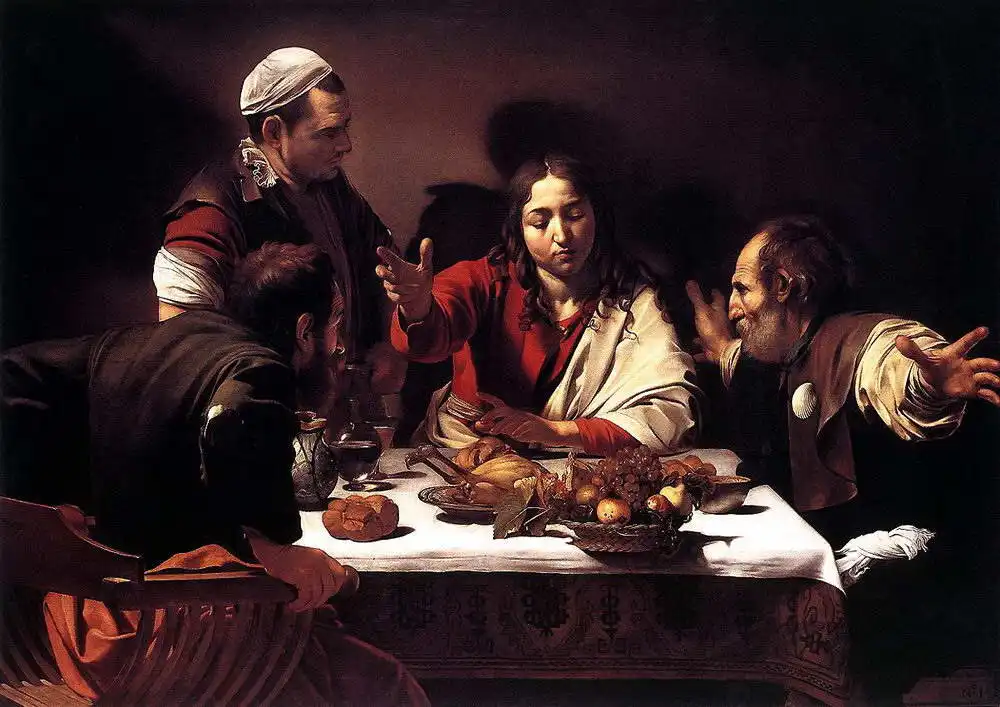About this finishing
Print. The image is printed on the top quality 10-ink HP Z9PS printer on HP matte 270 g / m2 paper. You can choose any size to an accuracy of 1 cm. A margin of 5 cm around the image is added to the size of the motif.


You can find a detailed description about our finishings
here.
Supper at Emmaus
Date:
1601Medium:
oil and tempera, boardLocation:
National Gallery, London, UKDimensions:
196 x 141The image shows the moment when the risen Jesus meets with two of his disciples, apparently Luke and Cleophas. The Apostle Cleopas wearing scallop shell, symbol of pilgrims and broad gestures whole arms. The Apostle Luke has torn clothes. Jesus is here, against all common-established traditions displayed without the beard. The fourth man seems unaffected by events, his face hidden in shadow. The painting is stylistically to life-size figures in unusual - the background is dark and empty. On the table is a setup for a typical meal still life. Like the world that the disciples knew even fruit basket on the edge of the table is on the verge of collapse.
Caravaggio painted another version of the same scene in 1606 in her classically portrayed Jesus with a beard.
Caravaggio painted picture Supper at Emmaus in 1601. Prevailing color of this fine art print is dark and its shape is landscape. Original size is 196 x 141. This art piece is located in National Gallery, London, UK. This image is printed on demand - you can choose material, size and finishing.
Caravaggio (Merisi Michalengelo) (1571-1610). Italian
Baroque painter, who in his short life was significantly influenced by Baroque painting. Born to a family of architects in Caravaggio, he was an unwary adventurer who liked teasing and toying with fate. In his early works, he preferred
realism. He worked with light and shadow, combining natural and architectural elements. He captured dramatic scenes (and his images are very sensational) by utilising hyperrealism and an impressive use of light and shadow. An intense light side, which he started using, helped him add intensity to colours and link the composition into one unit. Light, intense colours, and choice of motifs (often with the presence of death) are the cornerstones of his work, which indelibly influenced the history of art.



